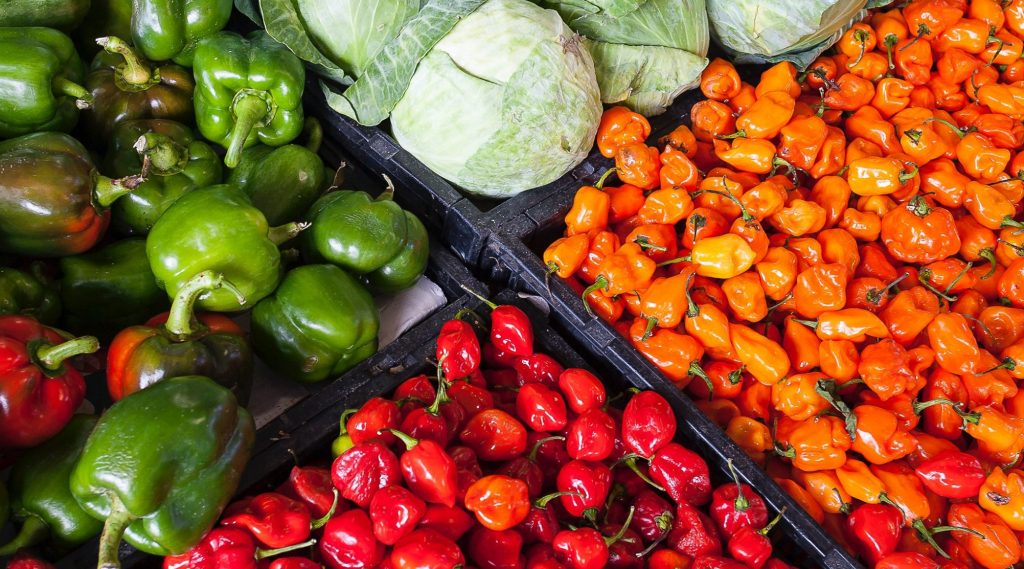Adapting to changing consumer sentiments has always been critical for the success of any company. Nokia and Kodak, once pioneers in mobile phones and photography, failed to change with the times. Nokia is now a minor player in the digital communications industry, while Kodak filed for bankruptcy in January 2012.
The COVID-19 outbreak has put many industries in a similar position to that of Nokia and Kodak when sentiment started shifting away from tried-and-true products. Yet few businesses are anticipating and acting on how consumer mindsets will change after the pandemic. “We’re going to have talks with psychologists and anthropologists to really understand how the public’s psyche is going to be in the future,” Karim Habib, Kia’s design chief, told British magazine Car in June. “There are things we’ve already been talking about: Can we have anti-viral coatings in our interiors? Can you use temperature or ultraviolet light to sanitize surfaces? These are things we will have to talk about rather soon.”

Hyundai is looking into projecting ultraviolet rays from the sun into cars to kill viruses, while Ford is developing a system to heat the cabin to over 56 degrees celsius (133 degrees Fahrenheit) in 15 minutes to kill any microorganisms.
Those investments would likely pay off as the change in customer sentiment and priorities in response to the COVID-19 pandemic will likely continue when economies reopen. “Looking beyond the immediate effects of COVID-19, few consumers expect to revert back to pre-crisis behaviors anytime soon,” said Kristina Rogers, EY (Ernst & Young) Global consumer leader, in a report in April.
Egyptian businesses need to understand and act on changes in domestic and international consumer sentiment or risk declining sales at home and abroad. “People are aware that easing lockdowns is not a sign of increased safety, but rather an economic decision,” says Maha Zayan, an independent counselor for seven years. “I think people will be scared, unsure, and cautious. Purchase decisions likely will be a mix of trepidation and frustration, having put their lives on pause for most of 2020.”
Understanding consumption
A September study by Mayada Aref and Ahmed Okasha, economics professors at Cairo University, found local “consumer behavior is affected by numerous economic, cultural, physiological and environmental factors.”
Their research also showed that consumerism in Egypt, in particular, is more related to sentiment and perception rather than to physical resources. “Previous research estimated the low penetration of credit cards in Egypt is delaying the spread of electronic commerce,” noted the report. Yet, Aref and Okhasha found “a large number of respondents did not have credit cards, but did shop online.”
They said any change that gives more confidence in transactions directly changes the buying patterns and demographics of users. They cite the emergence of cash-on-delivery and payment intermediaries such as Edfa3ly and Fawry, as innovations that attracted consumers who otherwise wouldn’t buy online.
Meanwhile, the COVID-19 outbreak has made people wary of face-to-face interactions. Staying home has forced everyone to work, play, order goods and communicate using computers and smartphones. After months of using digital platforms, more Egyptians than ever should be comfortable with online transactions.
Evolving behavior
Now that Egypt and other countries are relaxing restrictions on movement and entertainment, the COVID-19-era consumer will emerge. “People are at a point where they feel this is a long-term issue and they need to adapt,” says Zayan. “But they have to take calculated risks.”
However, she says that while people are more likely to meet friends in outdoor venues, uneasiness lingers. “There is still a lot of fear and a lack of credible information. Some people will continue to remain in strict lockdown mode, some will make the decision to go out based on priority and some will try to return to ‘normal’ life.”
Regardless of how people behave, digital platforms will become an integrated part of daily life. Said Nagy, managing director of eMarketing Egypt, a consultancy, wrote in a note to the media: “We’re witnessing a great shift in where consumers are spending, with a dramatic shift toward e-commerce. [Its] sales have doubled for Egyptian merchants since March 11, the day the World Health Organization announced that COVID-19 is a global pandemic.”
Another change is the boom in paid online media. A report by the National Telecom Regulatory Authority said that Netflix saw Egyptian subscriptions increase 69 percent during the second week of April. Meanwhile, MBC Group’s paid service Shahid increased by 40 percent.
Meanwhile, the government is capitalizing on those behavioral changes. One example is that it announced in early June that natural-gas readings could only be input on the website with payments made online or via Fawry.

Real-world change
Outside the virtual space, Zayan believes Egyptians will resort to extreme behavior, saying, “Some people are turning to retail therapy to cope with the current situation.” Others are still suffering anxiety from being infected. Meanwhile, a significant portion of society is “unsure about the impact of this phase on … their personal financial situations,” explains Zayan. “It seems to be a time of extremes.”
According to an IBM study published in May, the most hard-hit industries are retail, transportation and travel. “I believe [the] entertainment [budget] will be cut the most,” says Zayan. “It is harder to justify risking your health or the health of your loved one for fun.” Jesus Mantas, a senior managing partner at IBM Services, echoed a similar sentiment in the report, saying he believes daily routine changes will be permanent.
Tarek Rashed, head of CAPMAS, told Al Ahram Weekly in late April it was too early to predict the behavior changes resulting from the outbreak. “The imposition of social distancing and home isolation in the face of the virus could actually act as a catalyst for a speedy return to normal once the threat posed by the virus recedes.”
Ways of the world
Exports are a significant lifeline for the economy. According to the central bank (CBE), they generated $28.5 billion in fiscal year 2018/2019, or about a third of total foreign currency inflows. The CBE has yet to publish export data for January through March.
However, the Ministry of Agriculture spokesman Mohammed al-Qersh told the Middle East Eye in June that agricultural exports are witnessing “unprecedented growth.” He praised the government’s decision at the end of March to use passenger planes to carry produce to the GCC, United States, Asia and Australia.
Meanwhile, global grocery consumption “continues to show positive momentum, as it has since we first started measuring mid-March,” said a McKinsey report in June. According to Brittany Tam, a consultant at Hill+Knowlton Strategies, more than half of consumers “are buying only what they need,” she wrote in an April 2020 report.
Ahmed al-Attar, head of the Central Administration of Agricultural Quarantine at the Ministry of Agriculture, said in a June announcement that produces exporters have added seven new markets since the start of the year.
That could be due to eroding brand loyalty in the short term, said Tam. “Product availability is of the highest importance,” she wrote in late March. “It is still unknown if consumers will be more or less brand loyal moving forward, but we do know brands that keep their purpose at the forefront will be well-positioned to maintain sales (and trust) of consumers in the long term.”
For local businesses looking to export, that could be good news if they can supply new markets as their potential competition fails to meet demand.
Diversifying exports
Egyptian businesses need to understand international consumer sentiment as countries come out of lockdowns to ensure their exports of non-essential goods and services continue to grow.
McKinsey noted that while consumer behaviors will differ around the world, several overarching trends will persist. The first is “net consumer confidence has decreased,” along with their “intent to spend.”
The other significant change is the rise of what McKinsey calls the “homebody economy,” where consumers stay home or go to local shops for essentials. “Intent to travel [or] shop at malls … remains low across countries,” the report noted. That is not good for Egypt, which relies on tourism for hard currency inflows.
An April report by EY on behavior trends during the COVID-19 outbreak looked at the likely progress of consumption across several developed and emerging economies. It found that consumers who choose to “cut deep” spending across all categories most likely will continue to do so. A small portion may increase spending by being “cautiously optimistic” or “stay frugal.” Almost none of them will “return to normal behavior” or “be back with a bang.”
Meanwhile, those likely to start spending more after the lockdown ends will be those who “save and stockpile” or “hibernate and spend.” The latter most likely will be “back with a bang,” said the EY report. Those who “save and stockpile” will probably be “cautiously optimistic.”
New strategy
With more people feeling anxiety, Zayan believes companies need to address their fears front and center. “The focus needs to be on safety and how the business has accommodated product/service to protect people and/or put them first,” she says. “Some brands have been doing this throughout the lockdown, and people are more likely to turn to those businesses.”
The McKinsey report stressed the importance of medical authority endorsements of the firm’s practices and implementation of visible safety measures. That would be especially important in restaurants, stores, and other indoor businesses. The report noted that social distancing is the least of consumers’ concerns when visiting a shop or restaurant.
Companies that export also must adapt to their markets’ “new normal.” McKinsey noted the key will be for businesses to expand and develop a digital business model, depending on where they operate. Online shopping will increase more in the United States, India, South Korea, and Japan. In Europe and Latin America, online shopping won’t spread as much, though it will likely be more than it is now.
Tam, from Hill+Knowlton Strategies, believes consumers will go to retail outlets that visibly sell COVID-19 protective gear. “Unsurprisingly, consumers expect brands to produce products that aid [them] with today’s challenges and communicate transparently to stakeholders,” she wrote. It won’t hurt if companies are marketing their efforts to support society as a whole, says Zayan.
Meanwhile, the IBM Study stressed the importance of businesses starting to sell more affordable products because more people are losing their jobs or seeing pay cuts. According to the OECD in May, global unemployment rose to 5.6 percent in March compared to 5.2 percent in February. The United States unemployment rate rocketed from 4.4 percent in March to 14.7 percent in April, its highest since January 1948.
The change in “COVID-19 consumer” sentiment will also impact informal businesses or companies that don’t have credit card machines. The IBM report noted an “increased willingness to use contactless payment technologies when shopping,” as long as fears persist that exchanging money could transmit the virus.
However, despite that laundry list of precautionary measures, Zayan urges companies and people not to trick themselves into believing there is a “new normal.” “It is hard to describe the [current] state other than ‘life is not normal,’” she says.







